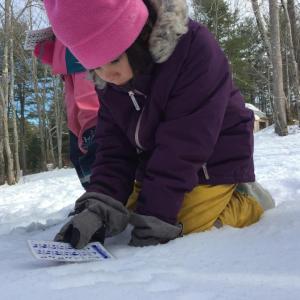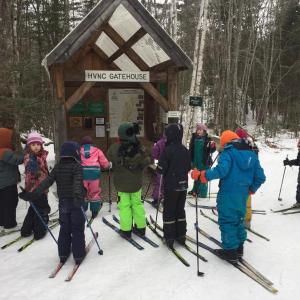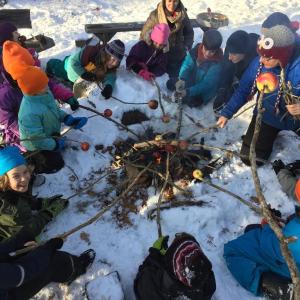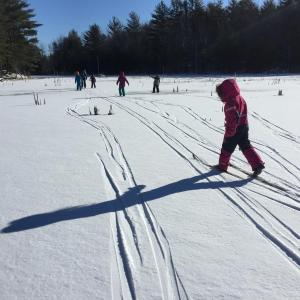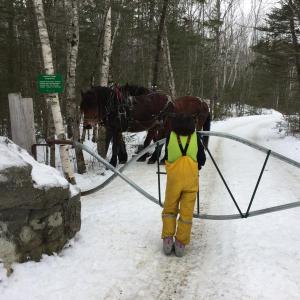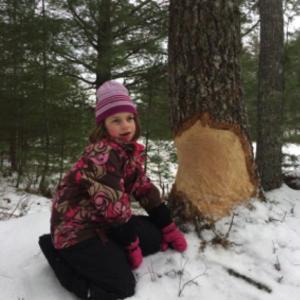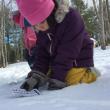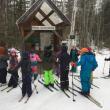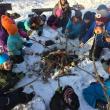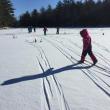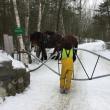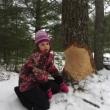Juniper Hill students study wilderness at HVNC
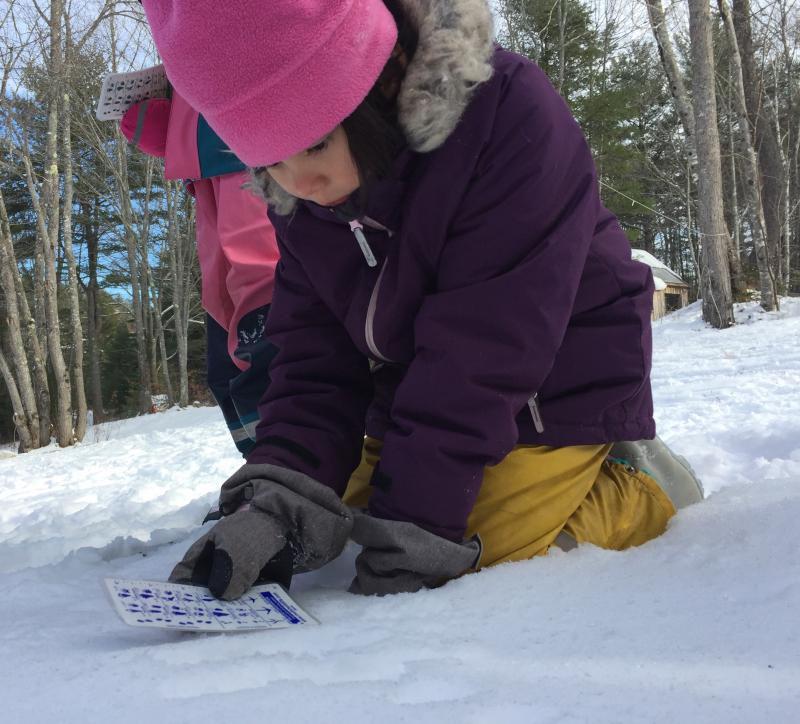 A Juniper Hill School student identifies animal tracks in the snow. Courtesy of Juniper Hill School
A Juniper Hill School student identifies animal tracks in the snow. Courtesy of Juniper Hill School
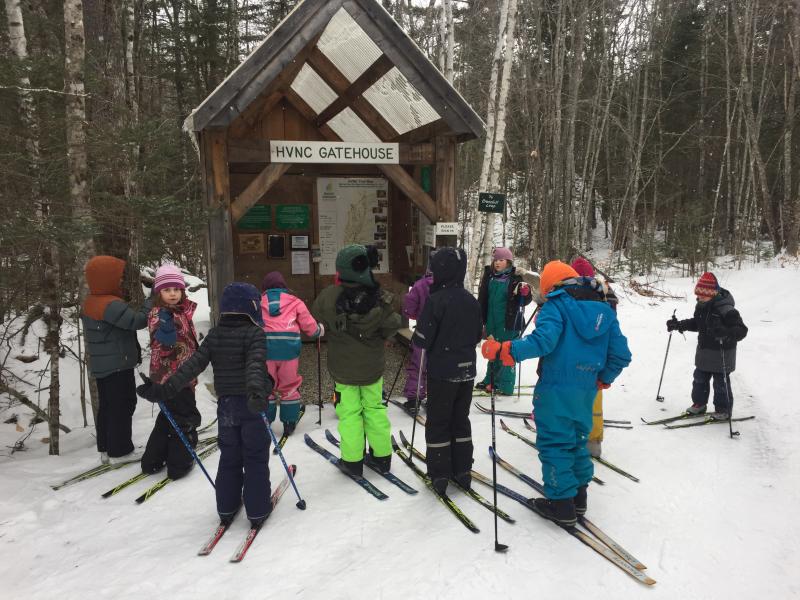 Students gather at the HVNC gatehouse at the start of the day to discuss trail conditions, weather, and itineraries. Courtesy of Juniper Hill School
Students gather at the HVNC gatehouse at the start of the day to discuss trail conditions, weather, and itineraries. Courtesy of Juniper Hill School
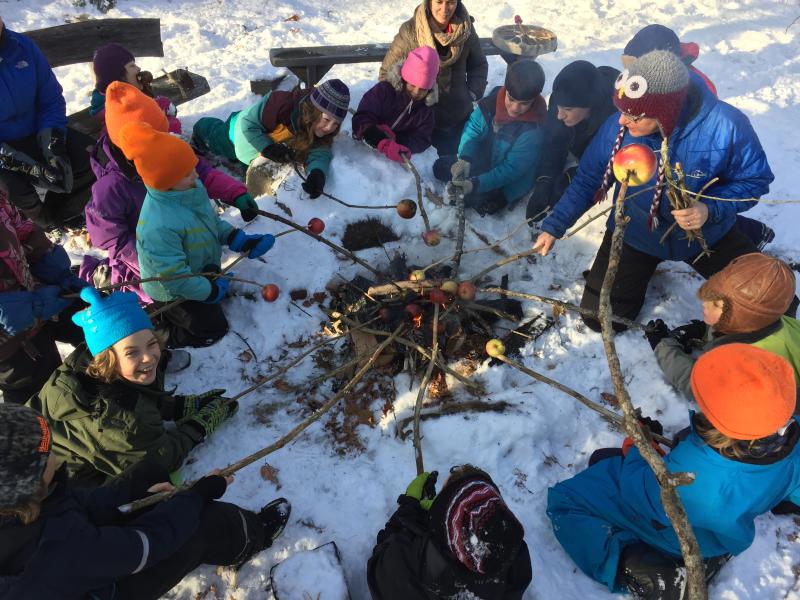 Gathered around a campfire, students roast local apples on their own hand-carved roasting sticks. Courtesy of Juniper Hill School
Gathered around a campfire, students roast local apples on their own hand-carved roasting sticks. Courtesy of Juniper Hill School
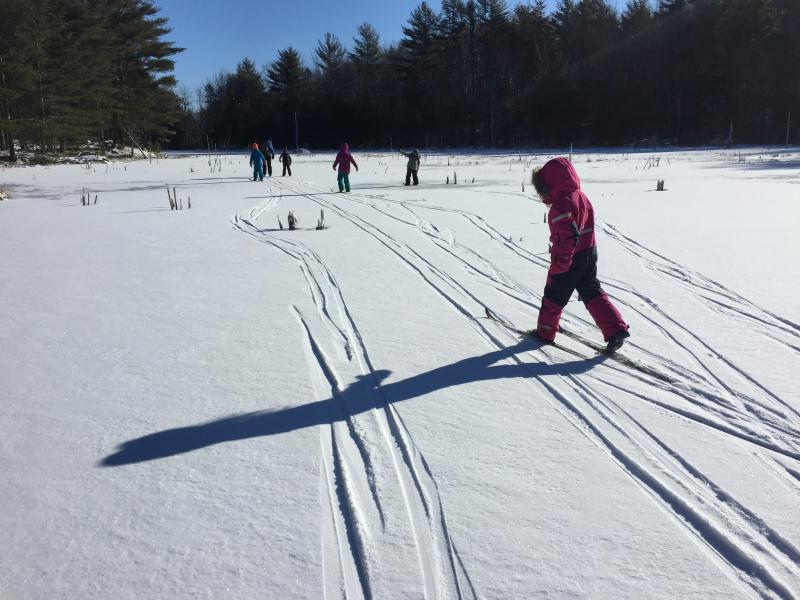 Skiing across new snow on Kidney Pond. Courtesy of Juniper Hill School
Skiing across new snow on Kidney Pond. Courtesy of Juniper Hill School
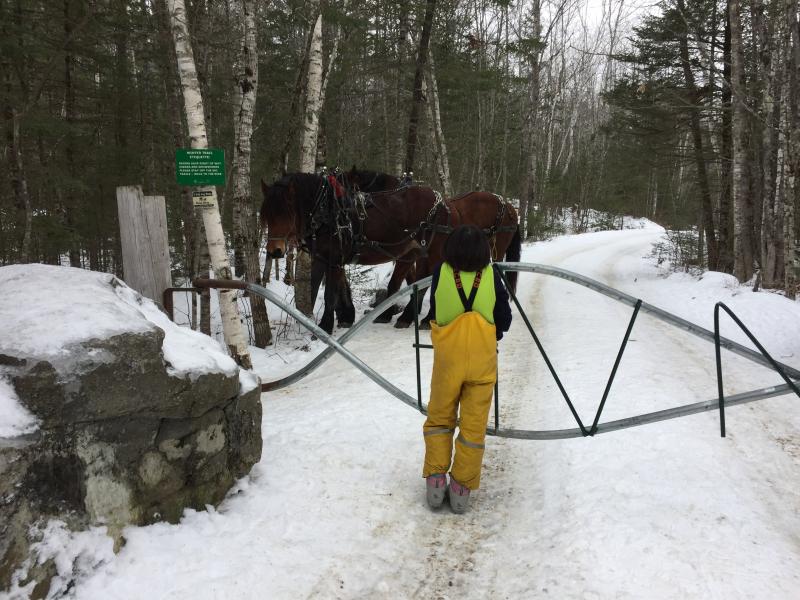 A student observes the behavior of draft horses from Goranson Farm, who stayed at Hidden Valley for over a week for winter logging work. Courtesy of Juniper Hill School
A student observes the behavior of draft horses from Goranson Farm, who stayed at Hidden Valley for over a week for winter logging work. Courtesy of Juniper Hill School
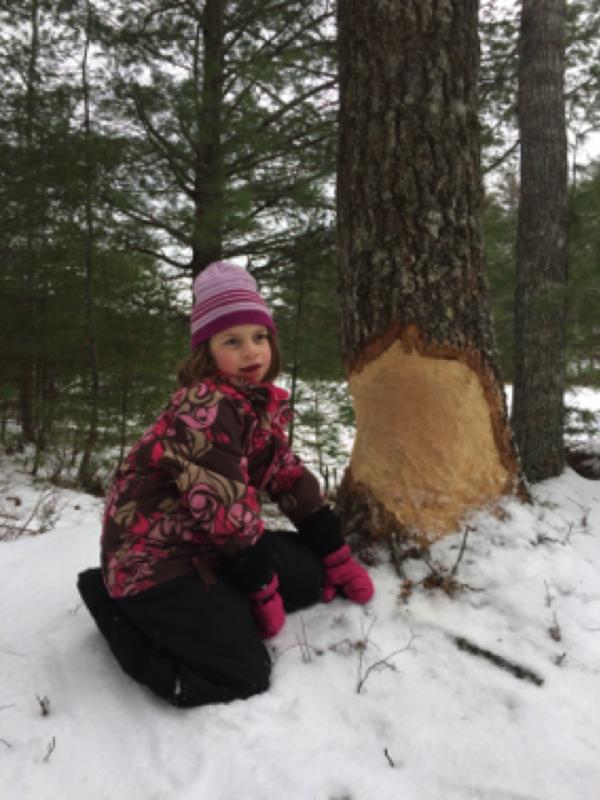 Seeing what it’s like to do a beaver’s work at Kidney Pond. This oak tree was gnawed by beavers recently. Courtesy of Juniper Hill School
Seeing what it’s like to do a beaver’s work at Kidney Pond. This oak tree was gnawed by beavers recently. Courtesy of Juniper Hill School
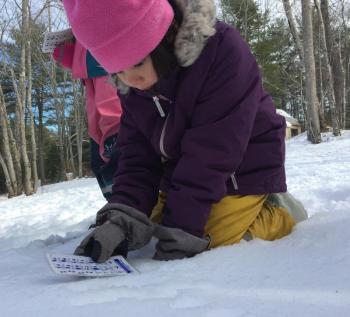 A Juniper Hill School student identifies animal tracks in the snow. Courtesy of Juniper Hill School
A Juniper Hill School student identifies animal tracks in the snow. Courtesy of Juniper Hill School
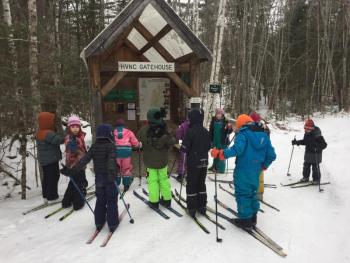 Students gather at the HVNC gatehouse at the start of the day to discuss trail conditions, weather, and itineraries. Courtesy of Juniper Hill School
Students gather at the HVNC gatehouse at the start of the day to discuss trail conditions, weather, and itineraries. Courtesy of Juniper Hill School
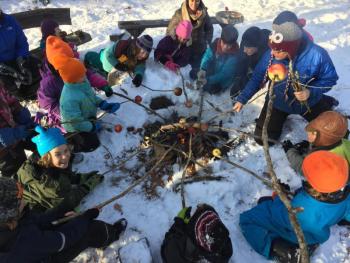 Gathered around a campfire, students roast local apples on their own hand-carved roasting sticks. Courtesy of Juniper Hill School
Gathered around a campfire, students roast local apples on their own hand-carved roasting sticks. Courtesy of Juniper Hill School
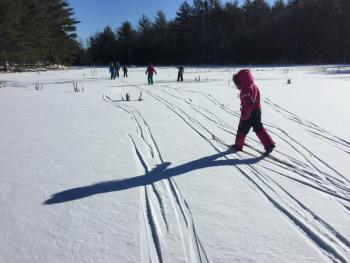 Skiing across new snow on Kidney Pond. Courtesy of Juniper Hill School
Skiing across new snow on Kidney Pond. Courtesy of Juniper Hill School
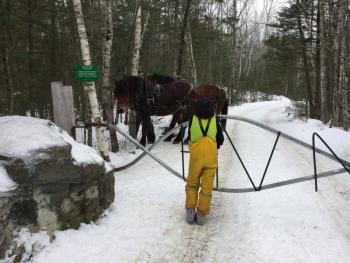 A student observes the behavior of draft horses from Goranson Farm, who stayed at Hidden Valley for over a week for winter logging work. Courtesy of Juniper Hill School
A student observes the behavior of draft horses from Goranson Farm, who stayed at Hidden Valley for over a week for winter logging work. Courtesy of Juniper Hill School
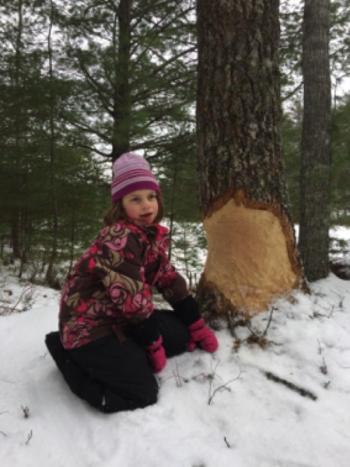 Seeing what it’s like to do a beaver’s work at Kidney Pond. This oak tree was gnawed by beavers recently. Courtesy of Juniper Hill School
Seeing what it’s like to do a beaver’s work at Kidney Pond. This oak tree was gnawed by beavers recently. Courtesy of Juniper Hill School
Juniper Hill School for Place-Based Education’s elementary students recently completed their winter wilderness studies, a weekly program that moves studies from the school’s Alna campus to Hidden Valley Nature Center in Jefferson. Since December, Hidden Valley’s trails, woods and ponds have been the 1st-4th graders’ outdoor classroom every Friday, offering students rich, experiential place-based learning opportunities.
The visits included lessons on map skills, animal tracking, tree identification, and winter wilderness skills such as fire building, ice safety, wild edibles, and campfire cooking. Highlights included testing ice depth on Haybale Pond, drinking tea made from foraged evergreen needles, learning about sustainable forestry while visiting Goranson Farm’s draft horses, and spotting some live animals and lots of animal signs.
When weather permitted, students explored Hidden Valley via cross country skis, learning how to ski efficiently in a variety of trail conditions. Skiing skills were taught by Juniper Hill teachers, and the group covered about a mile of trail at each visit. Map skills and directionality were taught and practiced during skiing adventures, where students used trail maps of the nature center to plan routes based on distance, difficulty, and terrain covered. Students learned to look for trail markers, and used a compass to help them place themselves on a map. School Director Anne Stires, who visited HVNC with the classes on their final day, remarked, “The students’ place and natural knowledge, as well as their skiing aptitude increased ten fold since their first visit eight weeks ago. It is impressive to witness.”
Juniper Hill’s weekly visits made it possible to watch the behavior of some local creatures throughout the winter, focusing on three species: porcupine, otter and beaver. In December, students learned how to identify porcupine tracks and discovered some leading from Hi-Hut cabin, across a trail, into the woods to the base of a tree, and back. More tracks were spotted during subsequent weeks, and a porcupine was observed munching on some limbs midway up a tree. The group also monitored beaver activity at Kidney Pond, a beaver-made body of water. Early visits included sightings of freshly chewed trees and a frequently used otter slide. Later visits brought more thorough investigation of the pond, which revealed otter tracks and slides going the full length of the pond, stumps from beaver-felled trees around the pond, and three separate access holes in the ice. The volume of beaver activity led one 2nd grade student to call Kidney Pond “a paradise for beavers.”
“The beaver evidence really was remarkable,” said 1st/2nd grade co-teacher Robin Huntley. “It gave the adults opportunities to learn alongside students, which is when some of the best learning takes place - when everyone is excited and genuinely curious all at once.”
The experiences carried over into the students’ regular school days, and a great deal of instruction was shaped by experiences at the nature center. Students wrote stories about animals whose tracks they had seen, read about fire building and sustainable forestry, built life-size beaver lodges, carved rodent teeth, experimented with properties of ice, and learned skills for navigating nonfiction texts, all inspired by winter wilderness studies at Hidden Valley.
Juniper Hill students will return to Hidden Valley in the spring, when the nature center’s vernal pools afford unique opportunities for place-based springtime cyclical plant and animal studies.
Event Date
Address
United States

